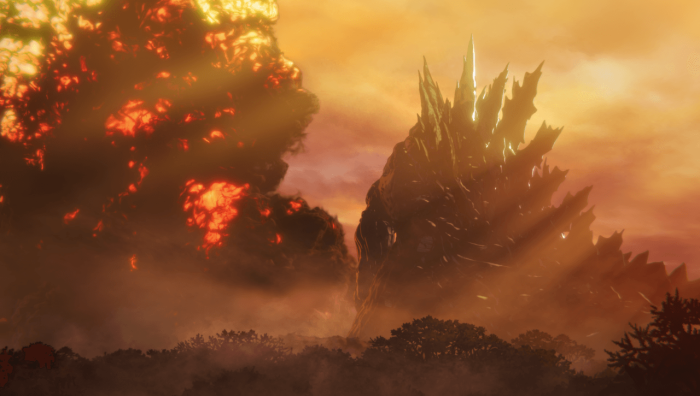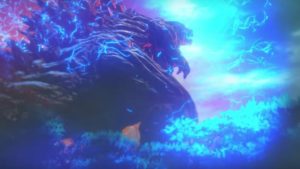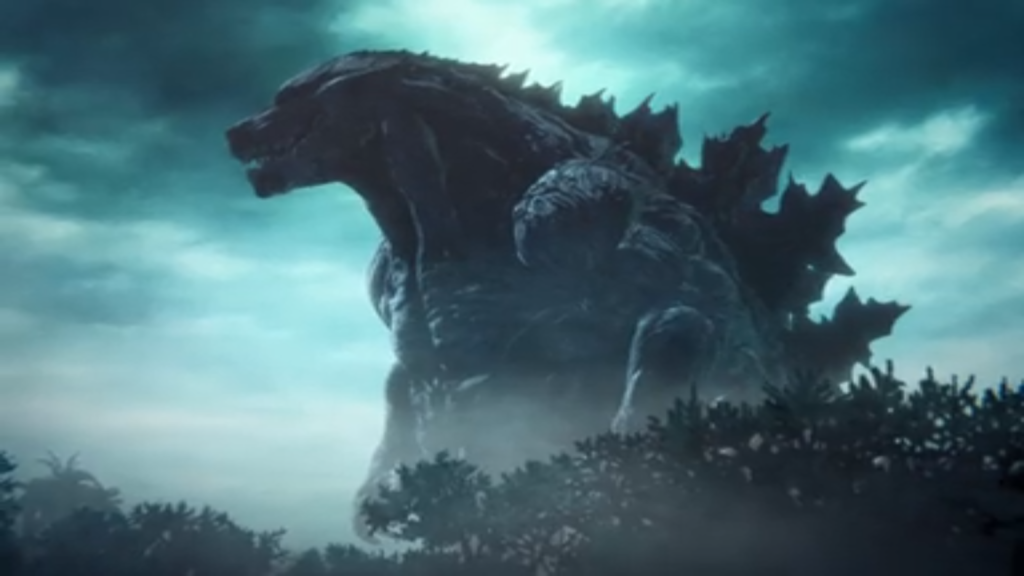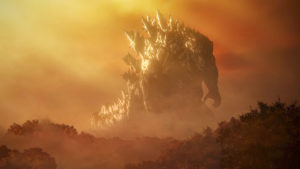It has been quite the revival for the King of All Monsters the last few years; with Legendary’s new Monsterverse (which kick-started with Godzilla in 2014), Godzilla Resurgence in 2016, and the Big G is making his return to animated form in the, now Netflix exclusive, episodic Godzilla: Planet of The Monsters — and boy, is it one hell-of-a-ride!
Article contains spoilers for Godzilla: Planet of The Monsters
What has made the current revival of Godzilla so unique by comparison to other series in the Kaiju’s history, such as the Heisei era, is the unique distinctions between each portrayal. This became a common theme in the back-half of the Millennium era, with the creature changing appearances and continuity between films like Godzilla, Mothra, and King Ghidorah: Giant Monsters All-Out Attack (2001) and Godzilla Against Mechagodzilla (2002), however, the changes that are being made to Godzilla’s history, and even biology and mythology, has made each installment more exciting and thought-provoking than the last. In the case of Planet of The Monsters, that could not be more true.
With an opening montage of destruction that plays on ever film in the series’ greatest fear: Godzilla dominating the human race, it becomes immediately clear that this story will be leading the audience in a completely new and fresh narrative. The story begins with our main protagonist, Captain Haruo Sakaki, traps himself in a shuttle under protest of his people’s emigration project, threatening to blow-up the ship in the process. Believing the prospect planet, Tau-E, to be uninhabitable and that the expeditions committee is sacrificing elder members of the colony to preserve resources, Sakaki surrenders to a plea from his grandfather and is arrested promptly. Sakaki is stuck in a cell to watch the ship enter Tau-E’s atmosphere and explode almost immediately, killing his grandfather, and emphasizing the pessimism the colony would now feel. We are then treated to the opening montage mentioned before which plays over the events that sent the human race into space; it is explained that in the final years of the 20th-century, many monsters and kaiju began appearing allover the world such as Kamacuras, Orga, and Manda, and causing destruction to Earth’s greatest populaces, Godzilla is one of the last monsters to arrive and quickly establishes dominance above other creatures. Sakaki narrates about the arrival of two alien species, the Bilusaludo and Exif, which offer the opportunity to defeat the Big G with a mock Godzilla (or this timeline’s MechaGodzilla), but that program failed, forcing the remaining human race, the Bilusaludo’s, and the Exif’s to escape from Earth and spend the following twenty-years in desperate search of a sustainable home-world.
Following the intense opening, Sakaki, while imprisoned, anonymously submits an essay detailing the likeliest weak-points to defeat Godzilla to the committee in an attempt to sway progression back to Earth. Though despite justification, the committee agrees to the plan to return the colony back to Earth, and due to the idea of utilizing a time/warp space-jump, there may be chance the creatures of Earth have all gone. Once back to Earth, the colony send detective drones around the planet’s surface, only to have one of the satellites be disrupted by the roar of Godzilla. Disappointed by the result, but determined nonetheless, Sakaki reveals himself to be the author of the essay and insists that Godzilla can be defeated by causing an implosion of an electromagnetic organ which pulsates a regenerative signal, this implosion would perceptibly kill the monster. The committee reluctantly agrees to this plan, and organizes an operation involving two settlements of the colony.
Once on the surface, it is realized that nearly 20,000 years have passed since the jump, which means the biosphere of Earth has changed drastically not just from Godzilla, but time itself. One of the settlements is then attacked by unidentified flying creatures known as Servum, they organize a retreat, but choose to rendezvous with the other team due to Godzilla’s frequency. Godzilla arrives in the area and the assault begins: the teams take attempts at trying to identify his weakness and where the organ may be, and it is not until Leland, one of the company commanders, sacrifices himself by provoking Godzilla’s atomic breath that the rest of the attackers calculated the weakness lies in the dorsal fins. Sakaki is given command as Godzilla is soon trapped under a mountain of rubble when the action is made to make a last assault on the Big G. After a succession of blasts and EMP drills into the dorsal fins, the humans finally manage to cause Godzilla to implode, killing the creature once and for all…
… Until about two-minutes later. Martin Lazarri, the lead researcher for the landed teams, acknowledges that Godzilla should have gone through much incremental evolution over the course of 20,000 years, suggesting that the creature they have killed may have been an offspring. It is at this moment that an incredible earthquake shakes the surface of the Earth, and from below the rubble, the original Godzilla rises. This Godzilla is much larger (over 300 m, 1000 ft), has the facial expressions of an aged being, and the biological structure to that similar of a plant or rocks, hence the new nickname “Godzilla Earth”. The humans attempt a quick escape, but a powerful tail-swipe and newly evolved atomic (or worse?) breath knocks the ships and ground-troops down. The original Godzilla is last seen stomping away from the wreckage, while Sakaki lay under rumble vowing to kill the monster. There is a short after credits scene showing Sakiki awaken to, what appears to be, a female warrior reminiscent of a tribal descent. These character can eerily be seen in the background of the forest when the teams first arrive back on Earth.
As a fan of the legacy that both Godzilla and Toho have presented audiences with over the past 60+ years, it makes me incredibly happy to see attention and care put into a concept that is so drastically different from what has been explored in the mythos before. While it may not be live action, the animation in this new saga is very high in quality and you can tell that the team behind it, Toho Animation and Polygon Pictures, wanted to put their greatest efforts forward. This is honestly the first time I can say that, since the original Godzilla: King of The Monsters in 1954, that there was noticeably cheesy moment, or at least, a moment that did not drag the seriousness from the tone. This is a very bleak special, and when an emotional moment such as the rise of Godzilla Earth, that tone helps emphasize those specific moments.
There has to be more specific praise given to the team of artists: Directors, Kobun Shizuno and Hiroyuki Seshita, along with a screenplay by Gen Urobuchi, truly create an immersive experience that I hope is continued throughout the series’ announced sequels. This really is the revival of Godzilla that the fans of this elongated series deserve.




